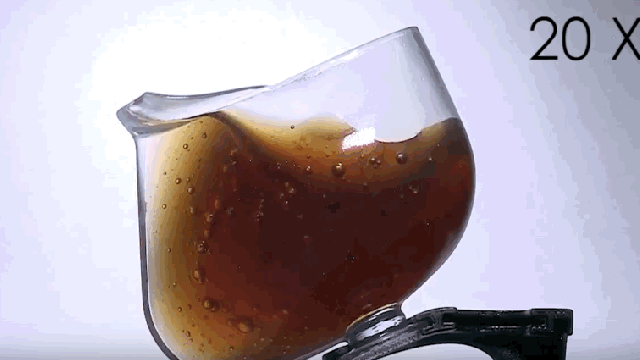Usually, drinking fluids in microgravity requires sucking liquid from a bag through a straw. But now a selection of experimental cups are aboard the International Space Station that allow astronauts to drink a little more normally while in space.
This new video shows the so-called Space Cups in action aboard the International Space Station. In the GIF, you can see astronaut Scott Kelly drain a glass of coffee in single continuous slurp. The footage is 20 times faster than in real life.
The new glasses are part of NASA’s Capillary Beverage Experiment, which was set up with engineering firm IRPI to establish if specially designed cups could mimic the role of gravity in normal drinking on Earth. Instead of relying on the usual forces to keep liquid in the cup, though, the new Space Cups use surface tension, wetting, and cup geometry to keep the liquid from escaping. You can watch it being filled and used in this video, below.
While NASA is mainly interested in studying the fluid dynamics at play in the container, it admits that a “secondary, but certainly interesting goal of the experiment is to observe and enjoy the casual consumption of a variety of onboard drinks by crew members”.
It’s early days for the cup, and these are just the first experiments to be performed aboard the International Space Station. But with high-grade coffee and something pleasant to actually drink it out of, the days of sucking juice from a bag in space may finally be over.
[IRPI and NASA via Fuck Year Fluid Dynamics]
